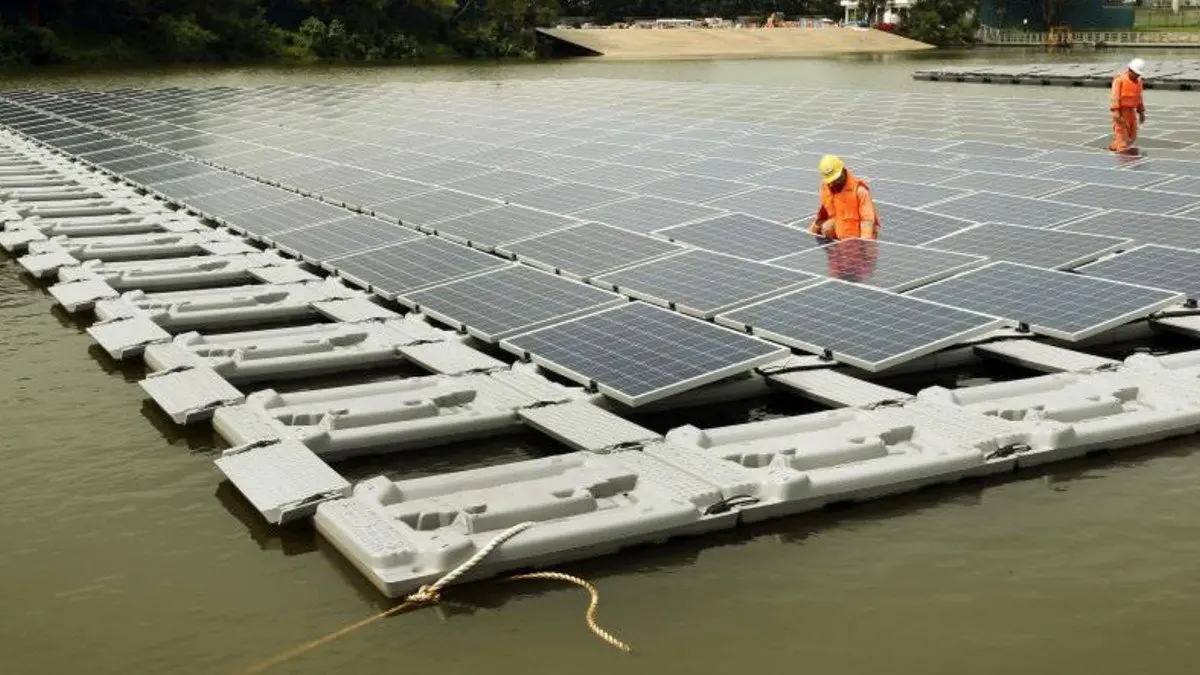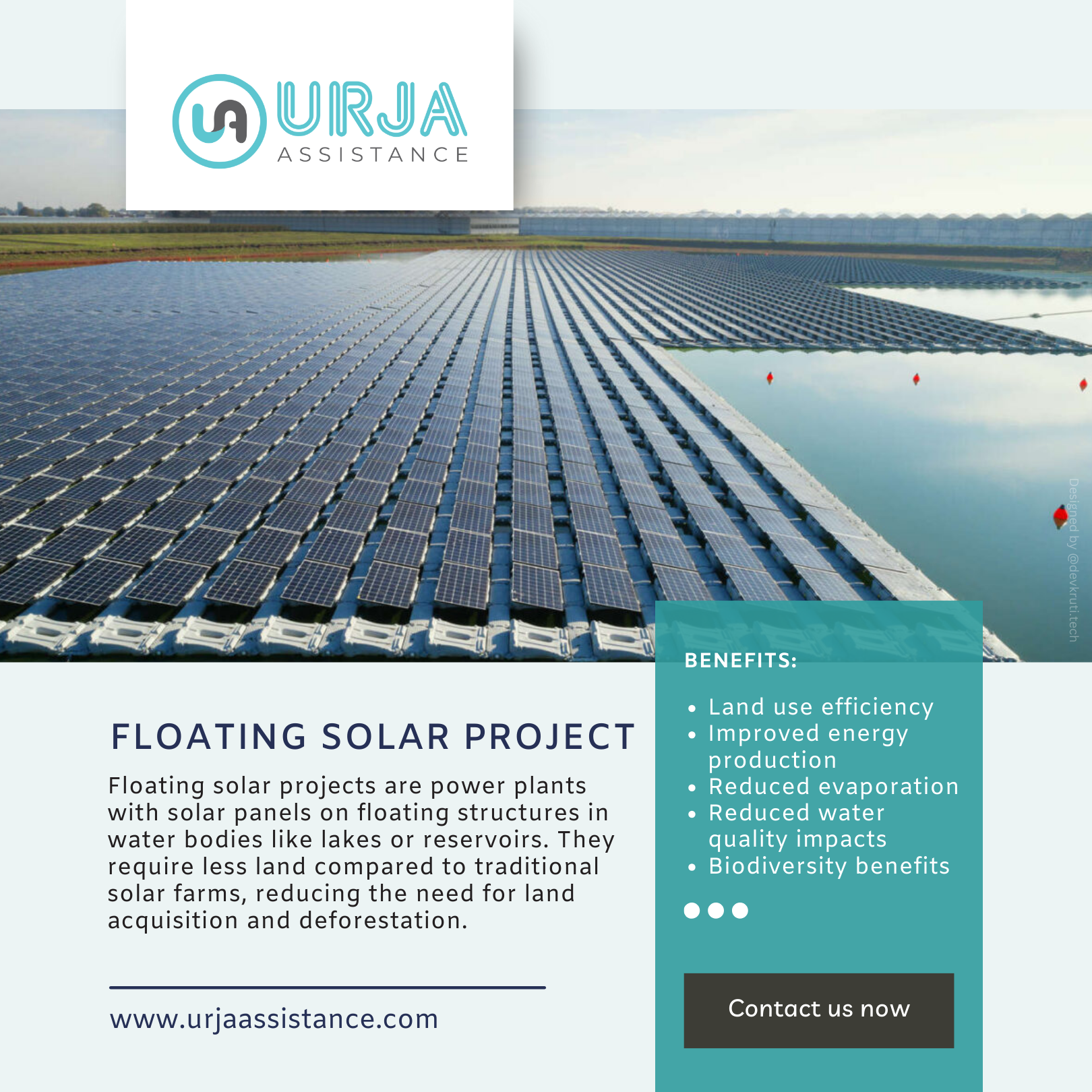A floating solar project is a power plant with solar panels mounted on structures that float on the surface of a body of water, such as a lake, reservoir, or even the ocean. Unlike traditional ground-mounted solar farms, which require large tracts of land, floating solar projects can be installed on existing water bodies, minimizing the need for land acquisition and deforestation.
Key benefits of floating solar projects:
- Land use efficiency: They can utilize underutilized water bodies, without competing with valuable agricultural land or other terrestrial uses.
- Improved energy production: Water can cool the solar panels, leading to increased efficiency and energy output compared to ground-mounted installations.
- Reduced evaporation: The panels can shade the water surface, helping to minimize evaporation and conserve water resources.
- Reduced water quality impacts: Floating solar panels can help to improve water quality by shading the water and reducing algae growth.
- Biodiversity benefits: Floating solar projects can create artificial habitats for fish and other aquatic life.
- Reduced environmental impact: Floating solar projects can have a smaller environmental footprint compared to land-based solar installations, as they don’t require land clearing or disruption of ecosystems.

Challenges associated with floating solar projects:
- Higher initial cost: The upfront cost of installing a floating solar project can be higher than that of a ground-mounted system, due to the need for specialized structures and anchoring systems.
- Environmental concerns: There is some concern that the panels could harm aquatic life or disrupt ecosystems.
- Maintenance challenges: Maintaining a floating solar project can be more difficult than maintaining a ground-mounted system, as access to the panels can be more limited.
Despite these challenges, floating solar is an emerging technology that has the potential to be very important in the shift to sustainable energy.
Some of the largest floating solar projects in India :
- 100 MW Ramagundam Floating Solar Project, India: This project, located on a reservoir in Telangana, India, was commissioned in 2023 and is the largest floating solar project in India.
- 600 MW Omkareshwar Dam Floating Solar Project, India: This project, currently under construction on the Narmada River in Madhya Pradesh, India, will be the largest floating solar project in the world when it is completed.
- 101.6 MW Kayamkulam Floating Solar Project, Kerala
- 50 MW Rihand Dam Floating Solar Power Plant, Uttar Pradesh
- 25 MW Simhadri Floating Solar PV Project, Andhra Pradesh
However, the project has also highlighted some challenges, such as the need for robust anchoring systems, regular maintenance to ensure optimal performance, and potential environmental impacts that need to be carefully managed. Despite these challenges, the overall success of the project indicates that floating solar has significant potential as a sustainable energy solution.
For More Detail Please Check Our Website : www.urjaassistance.com

